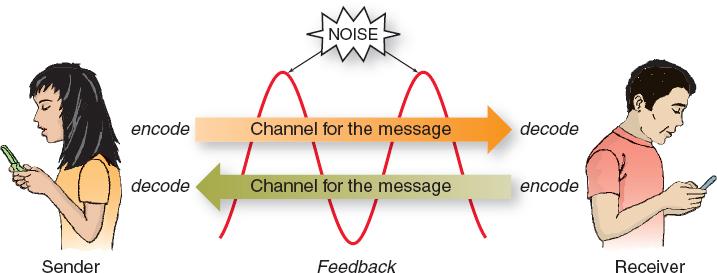The Interaction Model
The interaction model shows communication as a two-

Feedback can be a verbal message (your friend invites you to a party on Friday night, and you reply, “About nine?”), a nonverbal message (your roommate is telling you about a movie, and you look up, smile, and nod while you are listening), or both (you frown while saying, “I don’t think I understand”). Through feedback, communicators in the interaction model are both senders and receivers of messages.
Instant messaging is a good example of how the interaction model can be applied in mediated situations; you get feedback, but it’s not in “real time.” For example, while G-